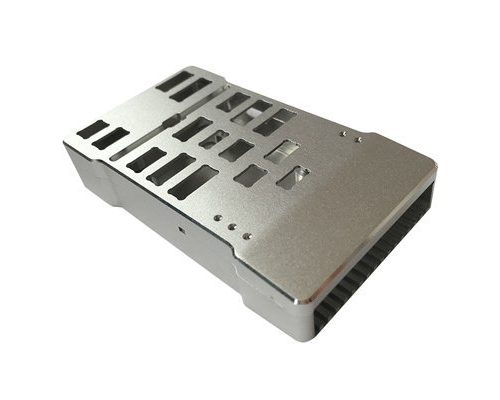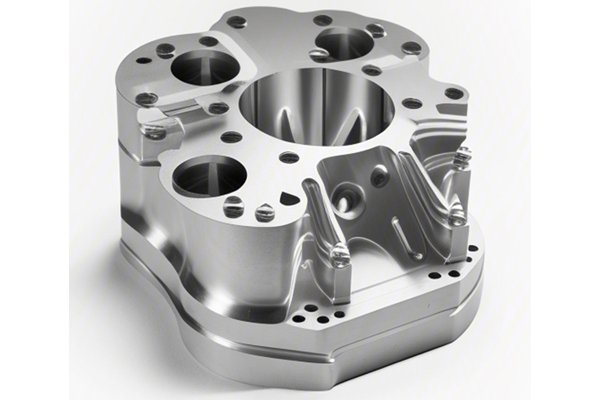When it comes to CNC machining, understanding the intricacies of controlling your machine is just as crucial as knowing how to operate it. That’s where G Code and M Code come into play. These programming languages act like the backbone of CNC machines, dictating everything from movement to speed and tool changes. But what really is the difference between them, and how do they work in harmony during machining processes? If you’re ready, let’s dive deep into the world of CNC programming.
Understanding CNC Machining: An Overview
Before we jump into the nitty-gritty of G Code and M Code, let’s wrap our heads around what CNC machining is. Think of it like an orchestra; each component has a unique role, but together they create beautiful music.
CNC, or Computer Numerical Control, is a technology that uses computerized systems to control manufacturing processes. Everything from milling and turning to laser cutting can fall under its umbrella. Machines interpret commands to produce parts with high precision and repeatability, much like how a conductor guides each musician to play in sync.
The importance of understanding G Code and M Code becomes crystal clear when you realize that they serve as the conductor’s baton, directing the machinery to perform desired tasks accurately. Each command you input guides the machine, ensuring that every movement is deliberate and controlled.
What is G Code?
The Basics
G Code, often referred to as “Geometric Code,” is the primary language used to instruct CNC machines. Imagine it as a script of instructions that tell the machine, “Move here, drill there, and go at this speed.” Each letter ‘G’ corresponds to specific commands, allowing the operator to outline precise movements in a set coordinate system.
For example, G00 is the command for rapid positioning, while G01 tells the machine to move at a specified feed rate for cutting. It’s like instructing a dancer to leap swiftly across the stage (G00), then slow down for a graceful dance sequence (G01).
Key G Code Functions
Examples of G Code Commands
Here’s a quick look at some common G Code commands:
What is M Code?
The Basics
While G Code takes care of the movement of the machine, M Code, or “Miscellaneous Code,” handles the machine’s auxiliary functions. It’s like the stage crew behind the scenes, controlling lights and sound, ensuring the performance runs smoothly without being in the spotlight.
Each M Code command corresponds to specific functions that manage the machinery’s state, such as turning on a coolant, starting or stopping a spindle, or even pausing the operation. This is essential for maintaining proper tool operation and ensuring the longevity of machinery.
Key M Code Functions
Examples of M Code Commands
Let’s take a peek at some commonly used M Codes:
How G Code and M Code Work Together
Now that we have a grasp on G Code and M Code individually, let’s explore how they work as a cohesive unit during CNC machining processes.
When you write a CNC program, you typically start with G Code commands to detail the movement paths the tool should follow. Each G Code line builds upon the previous one, creating a roadmap for the machining process. Once the tool paths are set, you integrate M Codes where necessary to manage the machine’s operations effectively.
For instance, in a typical machining operation, you might see a combination like this:
G00 X0 Y0 Z5 (Rapid position to start point)
M03 (Start spindle rotation)
G01 Z-1 F100 (Move down to depth of cut)
M08 (Turn on coolant)
G01 X10 F200 (Cut across the X direction)
M09 (Turn off coolant)
G00 Z5 (Retract tool)
M05 (Stop spindle)
M30 (End of program)
This structured flow makes sure that each action is done in the correct sequence, and that the tool is always performing at its optimum level. Just like in a well-rehearsed play, each line of code brings its own character to the performance, ensuring everything runs seamlessly.
Common Challenges with G Code and M Code
Navigating through G Code and M Code can be challenging. Just as a musician might hit a wrong note or forget a line, operators can face their share of difficulties when programming CNC machines.
Code Errors
Machine Compatibility
Different CNC machines might have variations in G Code and M Code commands. If you’re moving from one machine to another, it’s essential to adjust your code accordingly, much like changing from a piano to a guitar; the music might be the same, but the instrument requires a different touch.
Tips for Writing Effective G Code and M Code
If you want to become a master of G Code and M Code, here are some tips that might help you along your journey:
Final Thoughts
To wrap things up, understanding G Code and M Code is essential for anyone serious about CNC machining. It’s not just about making precise cuts; it’s about orchestrating an entire performance that requires skill, practice, and consistency.
By having a solid grasp of these commands, you’re not just operating a machine but mastering an art form. Whether you’re a beginner or an experienced operator, the world of CNC programming is as intricate as it is rewarding. Keep learning, keep refining your skills, and you might just end up like a maestro leading a grand symphony—smoothly and efficiently.
In Conclusion
Now that we’ve dived into the world of G Code and M Code, what are your thoughts? Are there challenges you face, or insights you’d like to share? Remember, the more engaged you are, the richer your learning experience will be. Let’s keep the conversation going and explore this fascinating world together!



